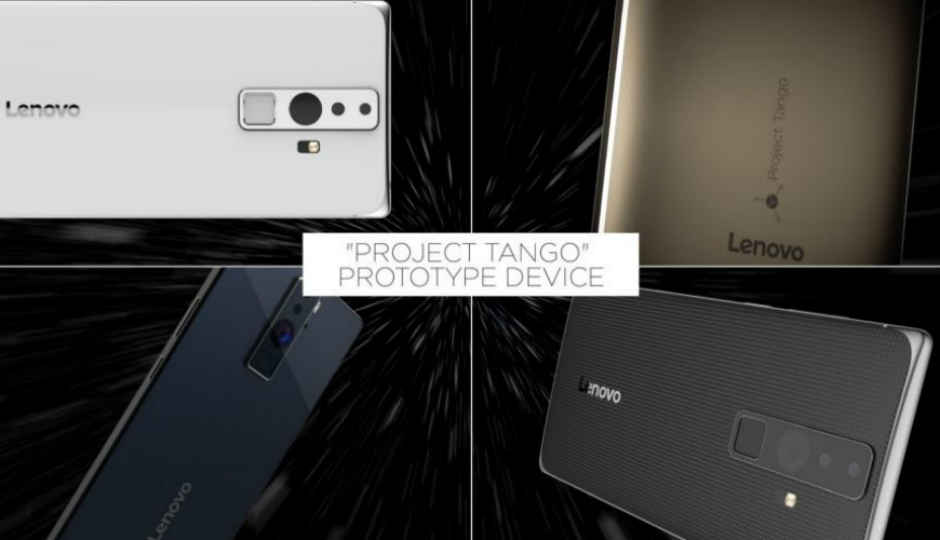Lenovo-Google to launch $500 Project Tango smartphone this summer
The 3D motion- and space-sensing smartphone will feature three different cameras, a host of sensors, and may just change the way we game and shop.

Lenovo and Google have announced a Summer 2016 deadline for bringing their Project Tango smartphone to consumers. Project Tango by Google uses a host of sensors and cameras to lend smartphones the ability to perceive space and movement in 3D, much like we humans do. With this smartphone, Lenovo will bring Google’s technology to the mass consumers, and will hope to make an impact in the augmented reality market.
 Survey
SurveyThe Project Tango smartphone has been confirmed to run on a Qualcomm processor, feature a screen size of less than 6.5 inches, and have three cameras for regular imaging and 3D mapping purposes. While a standard RGB camera will lend colour details, the two depth-sensing and fisheye cameras will perceive space, motion and area, which will be further used to map and scale rooms and arenas. This technology can then be applied to gaming and shopping experiences. For instance, you can use your home furniture as an obstacle within a game, and literally hide behind it to avoid or shoot your enemies. In shopping, the Project Tango smartphone will map your room, and AR-ready shopping sites will allow you to pick up a product, place it within your room’s map, and tell you whether it will suit or fit your room.
"You can literally hide behind your furniture to avoid in-game enemies"
Google had previously released the Project Tango Development Kit to encourage developers to make apps for the platform. To aid the idea further, an App Incubator Program is also being announced, which will support interesting developer ideas with engineering and monetary assistance. In the on-stage demonstration of the technology at the ongoing CES 2016, Project Tango lead Johnny Lee showed how the prototype device could scale rooms, gauge the height of a wall, and even play a round of digital Jenga with his colleague. Lee also demonstrated real-time 3D mapping in front of the crowd, by mapping the arena, fitting suitable furniture in that space, and even showcased a virtual pet that could interact with the 3D objects in the virtual world.
“With Project Tango, the smartphone becomes a magic window into the physical world by enabling it to perceive space and motion that goes beyond the boundaries of a touch screen. By working with Lenovo, we’ll be able to make Project Tango more accessible to users and developers all over the world to both enjoy and create new experiences that blends the virtual and real world,” Lee said at the demonstration. Exact specifications of Lenovo’s Project Tango smartphone have not yet been revealed, but it seems like a lucrative prospect in the growing world of connected, interactive regular objects aided by Augmented Reality (AR), which itself has been touted to become a $120bn industry by the year 2020.
"Virtual objects can interact with each other within real space"
While Lenovo might become the first company to mass produce a Project Tango-powered device, it is not the first. 3D-sensing smartphones powered by Google's technology have been picked up by NASA to aid its International Space Station robots. Intel has previously demonstrated its own Project Tango smartphone powered by its own RealSense technology at its 2015 Developer Forum. Intel’s Project Tango smartphone is available for pre-order on its own website, for a price of $399 (Rs. 26,610). Alongside speaking of a Summer 2016 launch of the device, Lenovo has also stated that the device will be priced at around $500 (Rs. 33,340). We wait to see how Lenovo and Google actually tangoes with this new piece of technology.